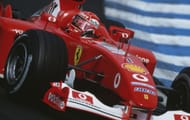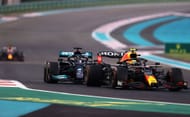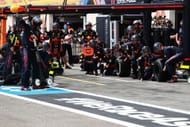In the fast-paced world of Formula 1, team dynamics can be a complex and multifaceted aspect of the sport. Drivers and team principals must navigate a delicate balance between personal ambition, team strategy, and sportsmanship, all while dealing with the intense pressure to perform at their best.
We're going to dive into the various factors that shape team dynamics in Formula 1. We will explore the relationships between drivers and team members, the leadership styles of team principals, and how external factors like sponsorship deals and media attention can impact team dynamics.
Whether you're a die-hard fan or new to the sport, this article has something for everyone. Let's get started!
Team orders
One key element in Formula 1 is the use of team orders. In certain situations, teams will issue orders to their drivers to help them achieve specific strategic goals. For example, a Formula 1 team might instruct one driver to let their teammate pass in order to help them advance up the grid.
This can be a controversial practice, as it can affect the outcome of a race and may not always be well-received by fans or the media.
At the 2002 Austrian Grand Prix, the Ferrari Formula 1 team instructed Rubens Barrichello to let Michael Schumacher pass on the final lap, allowing Schumacher to take the victory. This sparked outrage among fans and the media, leading to the introduction of new rules banning certain types of team orders.

Supporting drivers
Another important aspect of Formula 1 team dynamics is the role of the supporting driver. In many cases, one driver will be designated as the team's 'lead' driver while the other driver is expected to support them by helping to block other competitors or by sacrificing their own position to help the lead driver advance.
In some cases, Formula 1 drivers may also work together on track to help each other advance or block other competitors. This requires good communication and collaboration between the drivers, as well as a strong sense of sportsmanship.
In a recent example, at the 2021 Abu Dhabi Formula 1 Grand Prix, the final race of the season, Red Bull's Sergio Perez worked tirelessly for multiple laps, trying to keep Lewis Hamilton behind him as Max Verstappen charged from third to cover the gap.
After a series of nail-biting overtaking actions, Lewis Hamilton eventually overtook Sergio Perez but with a much-reduced delta to Max Verstappen who promptly overtook his teammate, calling him a 'legend'.

Now we all know how that particular race and season ended... so I won't be going into any details on that one but it's safe to say it was a masterclass on teamwork.
Driver ambitions
Formula 1 drivers are also individuals with their own personal goals and ambitions and must find a way to balance these with the needs of the team. This can be especially challenging for drivers who are competing for points and victories, as they must find a way to work together while also competing against each other.
This can either yield maximum constructors points in a 1-2 finish, or millions of dollars in the repair cost of both Formula 1 cars after a crash with zero points to show for it.
During the 2018 Azerbaijan Grand Prix, Red Bull teammates Max Verstappen and Daniel Ricciardo famously crashed out of the race after a failed attempt by the Australian driver to carry out an overcut on Verstappen as directed by the Red Bull team.
This, however, was a far cry from Lewis Hamilton’s and Fernando Alonso's disaster of a show.
Now, in case your memory is fuzzy, here's a reminder. At the 2007 Hungarian Grand Prix, Hamilton and Alonso were involved in a controversy regarding their positions on the track and the subsequent penalties imposed by the stewards.
Hamilton disobeyed team orders to allow Alonso to pass him, which resulted in Alonso being moved down five places on the starting grid while Hamilton took pole position. The McLaren Formula 1 team were also told they would not score any Constructor's Championship points in the race and wouldn't be presented with a winning constructor's trophy if either driver won.
McLaren initially expressed their intent to appeal the constructor's points penalty but withdrew their appeal after the espionage scandal.
Formula 1 pit crew
Finally, the pit crew plays a crucial role in the team's strategy, and their performance can have a significant impact on the outcome of a race. The Formula 1 pit crew must work closely with the drivers to execute strategic pit stops, and they must be able to adapt to changing circumstances on the track.
Some of their duties include: preparing the car for the race, performing minor repairs and adjustments, changing tires and wheels, sending out fresh tires and wheels and monitoring the progress of other teams.

They must also be able to accurately assess the condition of the car and make any necessary repairs or adjustments quickly and accurately. The Formula 1 pit crew must also be in good physical condition, as they must be able to perform their duties while wearing heavy protective gear in sometimes extreme temperatures.
The importance of the pit crew should not be underestimated, as their performance can determine the success of the team on race day.
In short, team dynamics in Formula 1 are an important aspect of the sport. Drivers, team principals, and the pit crew must all find a way to work together and navigate the various challenges and pressures of the sport, all while striving for victory on the track.
